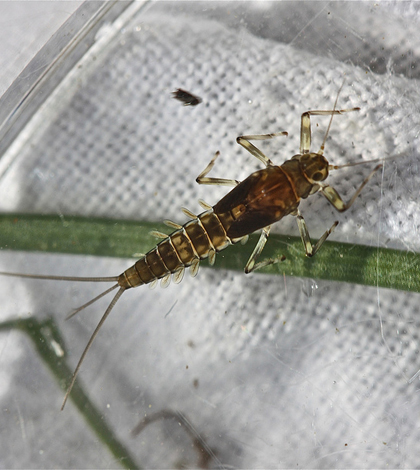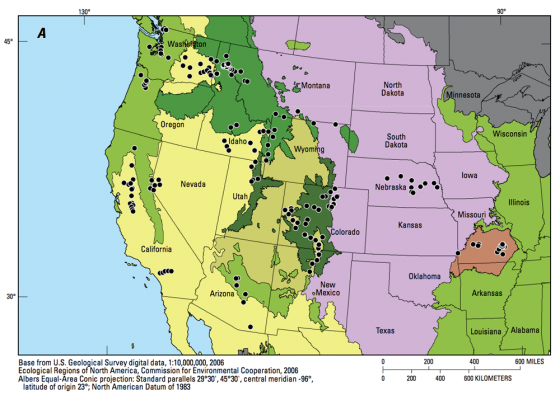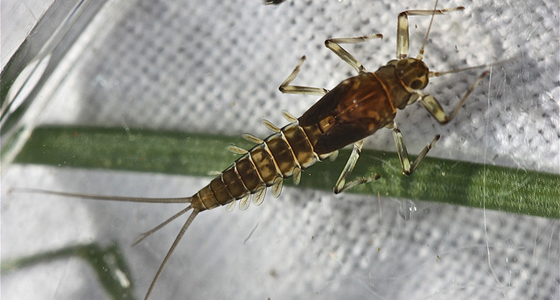Study checks effects of trace metals on insects across Western U.S. streams

A sweeping study of sediment-borne toxic metals and insect populations in more than 150 streams across the Western U.S. gives watchdogs a guidepost for evaluating whether metals are bothering the bugs in their streams.
The study, carried out by the U.S. Geological Survey, analyzed concentrations of nine trace metals in sediment collected from 154 streams across 15 states. The researchers also looked at data on insects and other invertebrates in each stream site. The data were collected between 1992 and 2000 as part of the USGS National Water-Quality Assessment Program. The metals include nickel, mercury, lead and chromium.
The results showed that streams with higher trace metal concentrations generally supported a less diverse group of invertebrates consisting of tolerant mayflies, caddisflies and midges. Certain species appeared to be more resilient than others, though which species thrived despite high metal concentrations depended on the region where the sediments were collected.

A map of the 154 sampling sites considered by the study. Click for large version. (Credit: USGS)
The study should give those charged with protecting the West’s streams a regional perspective when evaluating whether toxic metals are affecting insect populations.
“So, if you see a predominance of the Orthocladiinae midges over all the midges, that might be indicative of, possibly, a stressed system,” said Angela Paul, a water quality specialist with the USGS Nevada Water Science Center. “Now, what that stress is, that would be a site-specific consideration to take into context.”
The researchers faced the challenge of teasing out which, if any, abnormalities in invertebrate populations were actually caused by elevated trace metal concentrations. Biological data like insect population surveys can be tricky to interpret because so many factors affect which species show up in a particular habitat.

Baetis mayflies showed resiliency to trace metals in mountain and xeric regions, but not the Ozark highlands (Credit: Bob Henricks, via Flickr)
“You’ve got things like introduced species. You’ve got chemical exposure. You’ve got natural habitat characteristics. And then you’ve got what humans are doing when they develop an area,” Paul said. “All of that influences what you’re going to see in the stream, and so how do you differentiate amongst all of those stressors?”
The researchers tried to hone in on the effect of metals by grouping the stream sites by land uses and ecologically distinct regions. The land uses considered were agricultural, urbanized, mined, mixed use and undeveloped landscapes. The “ecoregions” included the plains, mountains, Ozark highlands, and xeric plateau. The groupings helped make it more clear whether invertebrate populations were stressed by trace metals or just typical for, say, an urban stream in a mountainous region.
Though the study specifically sought out the effects of trace metals on invertebrates and not the effect of land uses, in some cases it’s tough to distinguish between the two, Paul said.
“The lowest metal concentrations were found to occur in the undeveloped an agricultural landscapes,” she said. “Generally, the highest metal concentrations were in collected sediments in areas by historic mining related activities which were already known to be contaminated with metals.”
Top image: A USGS crew collects stream invertebrates (Credit: USGS)





0 comments